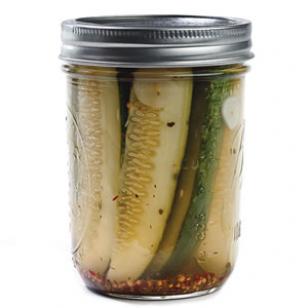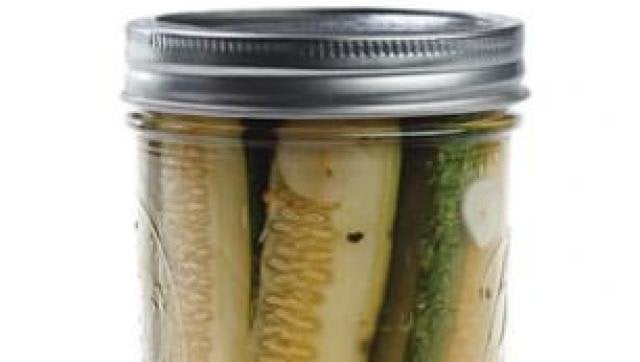
By Matthew Thompson, associate food editor for EatingWell Magazine
There are certain things I will never understand in this world: the rules of cricket, how fish reproduce, quantum harmonic oscillation… and people who don’t like pickles. That last one is probably the hardest for me to grasp.
Because, come on, pickles taste amazing! Snap into a perfectly crisp gherkin that’s sopped up plenty of vinegar, fresh herbs and just a hint of salt and tell me you’re not in briny heaven. Sneak a dill spear into your next burger and tell me it’s not tangily enhanced.
Don't Miss: More Produce-Packed Recipes for Summer
But don’t stop with cucumbers: you can pickle pretty much any veggie. Tomatillos, carrots, okra, beets: almost anything will be improved by pickling. And don’t let a fear of canning slow you down: instead, try making refrigerator pickles—no canning required! (Of course, should you like to can them, our recipes are suitable for that as well—see Step 5 below.)
Here are a few easy tips for making sure your pickles come out great.
• Most water is fine for pickling but avoid using hard water; use purified if in doubt.
• Use any vinegar you like. If you plan to can, however, make sure you use a vinegar with at least five percent acetic acid.
• Use pure sea salt without any additives or salt labeled “canning” or “pickling” salt. Additives in table salt may make the brine cloud.
Here’s a simple guide to transforming your fresh summer produce into a sharp and piquant playground for your taste buds:
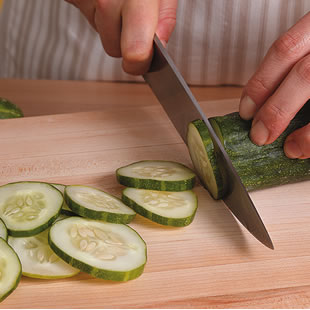 Step 1: Prepare Vegetables
Step 1: Prepare Vegetables
Wash and chop your veggies into whatever shape you’d like them to be pickled in (thin disks work well if you’re not sure what to do). Certain veggies will be enhanced by blanching them (briefly cooking them in boiling water). At EatingWell, we recommend blanching beets, Brussels sprouts, carrots, ginger, green beans, okra and peppers. Don’t bother blanching cucumbers, tomatillos, tomatoes or turnips, however. You can find recommendations for the quantity of vegetables to start with for different kinds of recipes here.
To blanch: Bring 16 cups of water per pound of prepped vegetables to a boil in a large pot. Add the vegetables, cover, return to a boil and cook for 2 minutes (cook beets for 5 minutes). Transfer the vegetables to a large bowl of ice water to cool; drain.
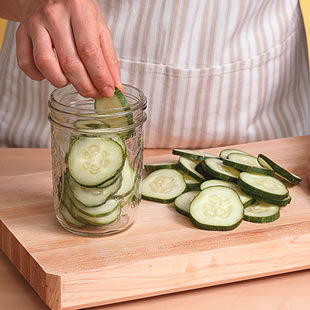 Step 2: Divide Vegetables
Step 2: Divide Vegetables
Divide the vegetables among 6 pint-size (2-cup) canning jars or similar-size tempered-glass or heatproof-plastic containers with lids.
Stay Safe: 14 Vegetables You SHOULD Buy Organic
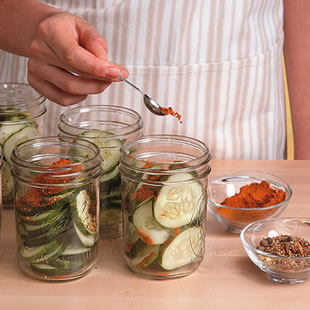 Step 3: Add Flavorings
Step 3: Add Flavorings
Add fresh or dry flavorings, if desired. Don’t be afraid to mix and match a little! Here are some tasty flavorings to try:
Dry Flavorings (amount per pint jar):
1 Bay leaf
1/2 teaspoon Celery seed
1-3 small whole Dried Chile peppers
1/2 teaspoon Cumin seed
1/2 teaspoon Dill seed
1/2 teaspoon Mustard seed
1/2 teaspoon Pickling spice
1/2 teaspoon Turmeric
Fresh Flavorings (amount per pint jar):
1 fresh Habanero or Jalapeño pepper
2-4 sprigs sliced or whole Dill
1/2-1 whole large clove, sliced Garlic
2 3-inch strips fresh (peeled) or 1/2 teaspoon prepared Horseradish
1 sprig fresh Oregano
1 tablespoon sliced Shallot
Don’t Miss: 8 of the World’s Healthiest Spices
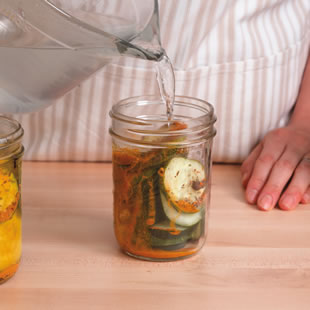 Step 4: Make Brine
Step 4: Make Brine
Make either sweet or sour brine using these recipes:
Sour Pickle Brine Recipe
Makes: 6 cups. Combine 3 cups distilled white vinegar (or cider vinegar), 3 cups water, 2 tablespoons plus 2 teaspoons sea salt and 2 tablespoons sugar in a large saucepan. Bring to a boil and stir until the salt is dissolved. Let boil for 2 minutes. Remove from the heat.
Sweet Pickle Brine Recipe
Makes: 6 cups. Combine 3 cups distilled white vinegar (or cider vinegar), 3 cups water, 1 1/2 cups sugar and 1 tablespoon plus 1 teaspoon sea salt in a large saucepan. Bring to a boil and stir until the salt and sugar are dissolved. Let boil for 2 minutes. Remove from the heat.
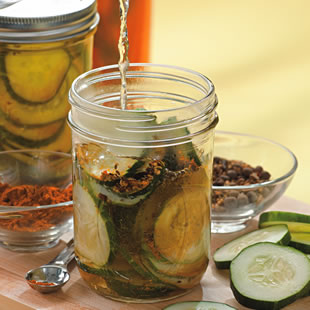 Step 5: Fill Jars with Brine
Step 5: Fill Jars with Brine
Carefully fill jars (or containers) with brine to within 1/2 inch of the top of the rim, covering the vegetables completely. Discard any leftover brine. Place the lids on the jars (or containers) and refrigerate for at least 24 hours before serving. (Refrigerate okra and turnips for at least 1 week before serving.) Pickles will keep in the refrigerator for up to 1 month. Find step-by-step instructions for canning your homemade pickles so they can be stored at room temperature for up to 1 year here.
What would you like to learn to pickle?
By Matthew Thompson
 Matthew Thompson is the associate food editor for EatingWell Magazine.
Matthew Thompson is the associate food editor for EatingWell Magazine.
